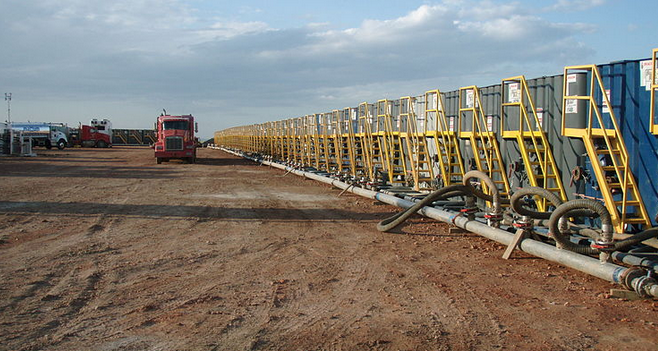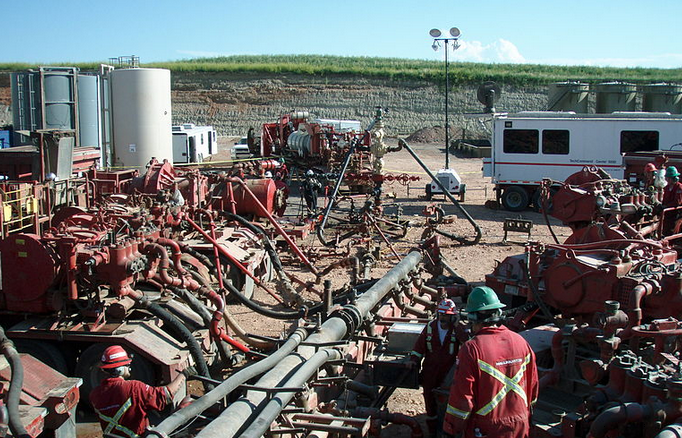BTN.com staff, BTN.com staff, July 17, 2015
It?s been driving rapid job creation and an investment boom for a few years now in the Midwest. And experts say it has the potential to make the U.S. energy-independent within the next couple of decades.
But when it comes to shale gas, there?s a major catch.
The process for extracting it from the ground - known as hydraulic fracturing, or ?fracking? - contaminates millions of gallons of water each year, pumps toxic gases into the air and even has the potential to cause earthquakes. So far, though, rising energy demand has trumped those concerns, said Fengqi You, an assistant professor of chemical and biological engineering at Northwestern University.
?It?s out there,? he explained. ?It?s going to be bigger and bigger in the next few years, whether you like it or not.?
 You and other researchers at Northwestern have spent several years now examining the shale gas production process and how it can be improved. And they recently shared a few ways in which the environmental effects can be mitigated in a study published in the June issue of the scientific journal ACS Sustainable Chemistry & Engineering. (The paper?s first author was doctoral student Jiyao Gao, who spearheaded the study in You?s lab.)
You and other researchers at Northwestern have spent several years now examining the shale gas production process and how it can be improved. And they recently shared a few ways in which the environmental effects can be mitigated in a study published in the June issue of the scientific journal ACS Sustainable Chemistry & Engineering. (The paper?s first author was doctoral student Jiyao Gao, who spearheaded the study in You?s lab.)
Fracking involves running pressurized liquid deep underground to rupture thick layers of rock, thereby allowing wells to reach petroleum and natural gas deposits below. According to You, once shale gas is released into wells, the now-contaminated water gets flushed back up to the surface.
?The water is no longer freshwater,? he said. ?It?s full of chemicals, salt and radioactive water. And how do you deal with this waste water? It?s too dirty to treat.?
And if that?s not enough, toxic methane gas is also regularly released during the process.
?Everybody knows that carbon dioxide is bad and causes great harm to the environment, but methane is 86 times worse than carbon dioxide,? You said.
Not surprisingly, fracking has been characterized as a ?cure? that?s worse than any of the ?diseases? it treats - dependence on dangerous and unstable countries for energy sources, an increasingly crowded and urbanized planet, and so forth.
Based on computational models, case studies and other research, You and his colleagues have found that much of the negative environmental impact could be lessened by tweaking various stages in the shale gas production process.

For example, there are currently more than 63,000 shale wells in the United States, and each one uses some 4-6 million gallons of freshwater for fracking. Wastewater from that process shouldn?t be carried away from the wells in trucks or injected underground, You said. If the oil companies used a network of pipelines to transport freshwater to drilling sites and shale gas to processing and power plants, they would significantly cut gas consumption and exhaust emissions.
[btn-post-package]Additionally, those companies can take a different approach to drilling. Instead of putting several dozen wells in a single location at the same time - which requires more water, transportation and storage, and releases more methane - they can put in a few at multiple sites. That would reduce the overall amount of water needed for drilling and minimize the amount of methane released into the air, You said.
The Northwestern professor is optimistic on the ability to make this process more environmentally friendly, as long as energy companies put more effort into treating the resource with caution and understanding.
?[They need] some careful analysis to do the right thing,? he said. ?There are always ways to make it better.?
By Tony Moton







